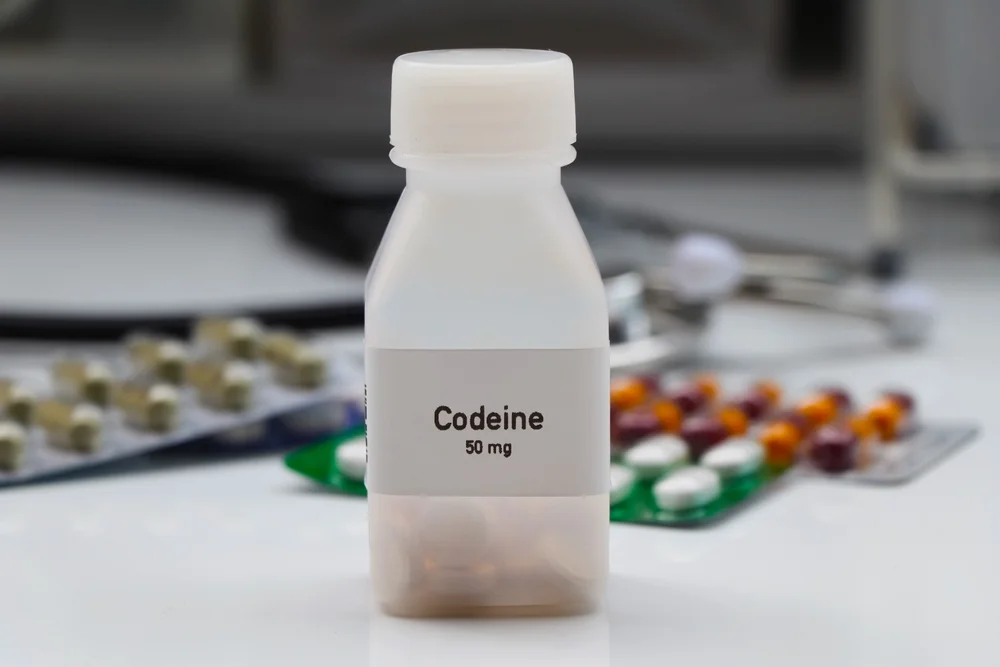Are you or someone you care about struggling to break free from codeine dependence? Withdrawal can be a tough road, filled with uncomfortable symptoms that make quitting feel like an uphill battle. However, understanding what to expect and knowing the right steps to manage these challenges can make all the difference.
In this blog, we’ll cover everything you need to know about codeine withdrawal. We’ll look at the symptoms you might experience, how long they last, and share some effective ways to manage them. We’ll also discuss treatments that can make this process easier and tips to keep you on track in your journey to quit. Whether you’re thinking about quitting or already fighting through withdrawal, this guide is here to help you through. Let’s get started!
Contents
Understanding Codeine Withdrawal
 Codeine withdrawal occurs when someone who has been using codeine regularly and for a long time reduces or stops taking it suddenly. This condition is a reaction by the body to the absence of the substance it has grown accustomed to.
Codeine withdrawal occurs when someone who has been using codeine regularly and for a long time reduces or stops taking it suddenly. This condition is a reaction by the body to the absence of the substance it has grown accustomed to.
Why Does Withdrawal Happen? When codeine is used regularly, the brain starts to rely on the drug to maintain these chemical levels, reducing its natural production. As a result, when the drug is no longer present in the system, the body experiences a deficiency, leading to withdrawal symptoms.
How Withdrawal Symptoms Occur?
When you stop taking codeine, the sudden drop in opioid levels causes the brain to scramble to regain balance. This imbalance results in a variety of withdrawal symptoms that can affect both the body and the mind. The severity and duration of these symptoms can vary depending on how long and how much codeine was used, as well as individual health factors.
Common Symptoms of Codeine Withdrawal
Withdrawing from codeine, an opioid pain medication, can trigger a range of uncomfortable symptoms as the body adjusts to functioning without the drug. Here are some of the typical symptoms experienced during codeine withdrawal:
- muscle aches
- nagging pains in the muscles and joints
- fluctuations in body temperature (sweating followed by chills)
- gastrointestinal distress
- runny nose and watery eyes
- insomnia
- anxiety
- depression
- irritability and mood swings
- cravings
- fatigue
- decreased appetite
Understanding these symptoms is crucial for those preparing to stop using codeine, as it can equip them with the knowledge needed to seek the right support and resources.
Timeline of Codeine Withdrawal
 The withdrawal process from codeine can vary in duration and intensity depending on several factors, including the length of time someone has used the drug, their dosage, individual metabolism, and overall physical health. Here’s an overview of what to expect during the withdrawal timeline:
The withdrawal process from codeine can vary in duration and intensity depending on several factors, including the length of time someone has used the drug, their dosage, individual metabolism, and overall physical health. Here’s an overview of what to expect during the withdrawal timeline:
Early Withdrawal Phase
- Duration: 8-24 hours after the last dose
- Symptoms: The initial symptoms are usually mild and begin to manifest within a few hours after the final dose of codeine. Common early symptoms include muscle aches, agitation, anxiety, and insomnia. Individuals may also experience frequent yawning, increased sweating, and a feeling of restlessness.
Peak Withdrawal Phase
- Duration: 1-3 days after the last dose
- Symptoms: Physical symptoms during this phase can include severe muscle and joint pain, diarrhea, nausea, and vomiting. Sweating, chills, and goosebumps are also common. Psychological symptoms such as irritability, anxiety, and strong drug cravings become more pronounced.
Subsiding Phase
- Duration: 4-7 days after the last dose
- Symptoms: During this phase, the intensity of physical symptoms starts to decrease. However, psychological symptoms like depression, anxiety, and cravings may persist. Some people might still experience gastrointestinal issues such as abdominal cramps and nausea, but these symptoms generally begin to fade.
Protracted Withdrawal
- Duration: Weeks to months after the last dose
- Symptoms: Some individuals may experience ongoing withdrawal symptoms that last for weeks or even months, commonly referred to as Post-Acute Withdrawal Syndrome (PAWS). These symptoms primarily include chronic fatigue, continued depression, anxiety, sleep disturbances, and prolonged cravings. The intensity of these symptoms typically decreases over time, but they can be triggered by stress or environmental factors.
Treatment Options for Codeine Withdrawal

Successfully managing codeine withdrawal requires a comprehensive approach that can include medical interventions, therapy, and support systems. Here’s an overview of the various treatment strategies that help alleviate withdrawal symptoms and support long-term recovery.
Medication-Assisted Treatment (MAT)
Here are some medications commonly used in the treatment of codeine withdrawal:
- Buprenorphine
- Methadone
- Clonidine
- Over-the-counter Pain Relievers
Behavioral Therapies
Behavioral therapies (Cognitive-Behavioral Therapy (CBT), Motivational Interviewing (MI), and Group Therapy ) are critical in addressing the psychological aspects of addiction and withdrawal. These therapies help develop coping strategies and new behavioral patterns that are crucial for long-term recovery
Support Systems
- Groups like Narcotics Anonymous (NA) provide ongoing community support, which can be crucial for individuals in recovery.
- Moreover, involving family members (family therapy) in the recovery process can improve communication, resolve conflicts, and reinforce the support network necessary for the individual in recovery.
Detox Programs
- Professional Detox Centers: These facilities offer medically supervised detox programs that provide a safe environment for individuals to withdraw from codeine. Medical staff can monitor symptoms and provide immediate care if complications arise.
- Inpatient Rehabilitation: For severe cases of addiction, inpatient rehab provides an intensive, structured environment where individuals can focus entirely on their recovery without the distractions or triggers of their everyday environment.
These varied treatment options offer a holistic approach to managing codeine withdrawal, addressing both the physical and psychological challenges.
Home Remedies and Self-Care for Managing Withdrawal
While professional medical treatment is crucial for managing codeine withdrawal safely, there are also several home remedies and self-care practices that can help ease the symptoms. These strategies can complement your treatment plan and make the withdrawal process more comfortable.
- Stay Hydrated
- Eat small, balanced meals throughout the day.
- Foods rich in protein, fiber, and healthy fats can provide sustained energy and help regulate mood swings.
- Avoid caffeine and sugar
- Rest and Sleep
- Engage in light exercises like walking or stretching
- Take natural supplements like vitamins and minerals and herbal remedies
- Engage in activities that you find calming and enjoyable, such as reading, listening to music, or crafting.
These self-care tips can help manage the symptoms of codeine withdrawal at home, but they should be used in conjunction with professional medical advice. Always communicate with your healthcare provider about your symptoms and any self-care measures you plan to use.
Conclusion
Recovering from addiction is tough, but you don’t have to do it alone. At QuitMantra, we offer tailored support and expert guidance to help you every step of the way. Whether you’re just starting out or need help staying on track, our therapy sessions and deaddiction programs are designed to meet your needs.
Visit QuitMantra today to book a trial therapy session or join our deaddiction program. Take the first step towards a healthier, addiction-free life. We’re here to support you on your journey to recovery. Let’s get started together.
